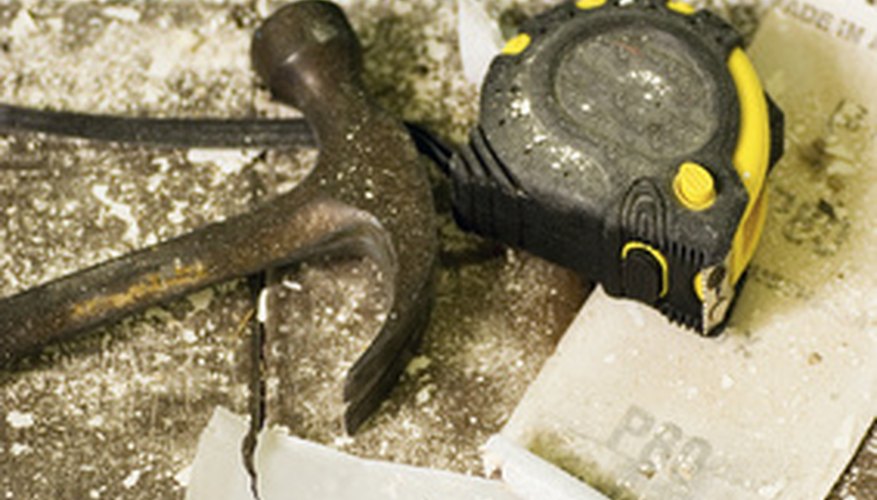Pollen, bee stings and peanuts are common allergens that cause runny noses, congestion, itchy eyes and skin and, for those most sensitive, anaphylactic shock. Plaster is not a material that first comes to mind as an allergen but, in fact, many people are allergic to either the materials of which plaster is composed or to organisms that can live in plaster. A patch test can determine if you are allergic to plaster, its components or its residents.
Plaster Allergy Symptoms
An allergy to plaster can cause the usual allergy symptoms, which, according to the Mayo Clinic, include respiratory tract difficulty such as congestion or an itchy or runny noise. Contact dermatitis or eczema is indicated by itchy, red, peeling or flaking skin. Symptoms in the eye include itchy or red eyes (conjunctivitis). Loss of consciousness, shortness of breath, rapid or weak pulse, nausea and vomiting and a swollen airway could be symptoms of anaphylaxis, which requires immediate medical intervention.
- An allergy to plaster can cause the usual allergy symptoms, which, according to the Mayo Clinic, include respiratory tract difficulty such as congestion or an itchy or runny noise.
Pre-Existing Conditions
People with pre-existing conditions such as COPD or asthma are likely to be more severely affected by an allergy to plaster than others. Other allergies, such as an allergy to dust, can be triggered by exposure to plaster.
Volatile Organic Compounds in Plaster and Drywall
Plaster and drywall (a building product made of plaster and paper) contain volatile organic compounds (VOCs) that can be toxic even if you are not allergic to them, but often people do suffer allergy symptoms from VOCs, which can irritate the skin, eyes and respiratory system. Some common VOCs are aldehyde, benzene, xylene, toluene, trichloroethane, chlorobenzenes and polychlorinated biphenyls. To reduce your exposure to VOCs, wear a mask and goggles when you work with plaster or drywall and ventilate the area by opening the windows and using a fan to blow the air out.
Dust Mites and Mold in Plaster
Dust mites and mould can live in plaster and both are very common allergens. If one of these is the source of your allergy symptoms, you may have to consider replacing the affected plaster, whether it is drywall or plaster that was applied wet to your wall, or, more likely unless your house is quite old, to your ceilings.
Plaster of Paris
It is uncommon, but some people are allergic to a chemical, benzalkonium chloride, in Plaster of Paris. This allergy could be a deterrent to sculptors and crafters, but it is most likely to show up when you have a plaster cast applied to a broken bone. The solution is to use some other material for the cast.
Another Meaning of "Plaster"
The word "plaster" can also mean a band-aid like covering for wounds. Often people are allergic to the adhesive, colophony or resin, used in this kind of plaster. An allergy will likely manifest as contact dermatitis, or eczema.
